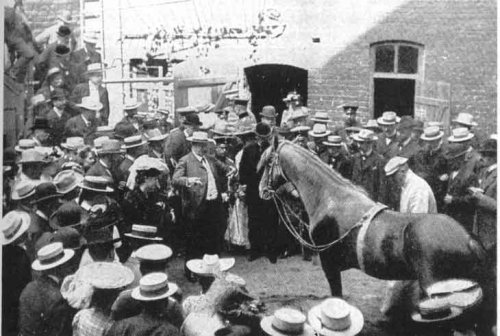
Plus Advent Calendar Door #19: The mathematical horse
Research has shown that various animals have an ability to count, but in the nineteenth century a horse amazed audiences by completing far more advanced mathematical tasks. Hans Von Osten was an Arabian stallion bought by Wilhelm Von Osten in 1888. Before Hans, Wilhelm had tutored a cat and a bear in addition. When both attempts failed, he tried a horse. Someone would ask a simple arithmetic question — for example What's 7 times 4? — and they would then start counting aloud. When they reached 28 Hans would start stamping his hooves.

Clever Hans performing.
A panel of scientists — The Hans Commission — led by Carl Stumpf, was asked to conduct research into the horse's ability. When they struggled to find a reason, the responsibility was passed to Oskar Pfungst, another psychologist. After a series of tests Pfungst concluded that the horse was neither doing mathematics, nor involved in fraud: Hans was reading subconscious messages! When the questioner was counting, he would emit subtle subconscious signals as the answer was reached, Hans recognised these, and responded accordingly. Hans's case study is now infamous, with the generalised case of his ability now named after him: the Clever Hans Effect.
This is an excerpt from the article The death of the lightning calculator, which looks at how, before the advent of technology, humans (and a horse) performed amazing calculational feats.Return to the Plus advent calendar 2019.